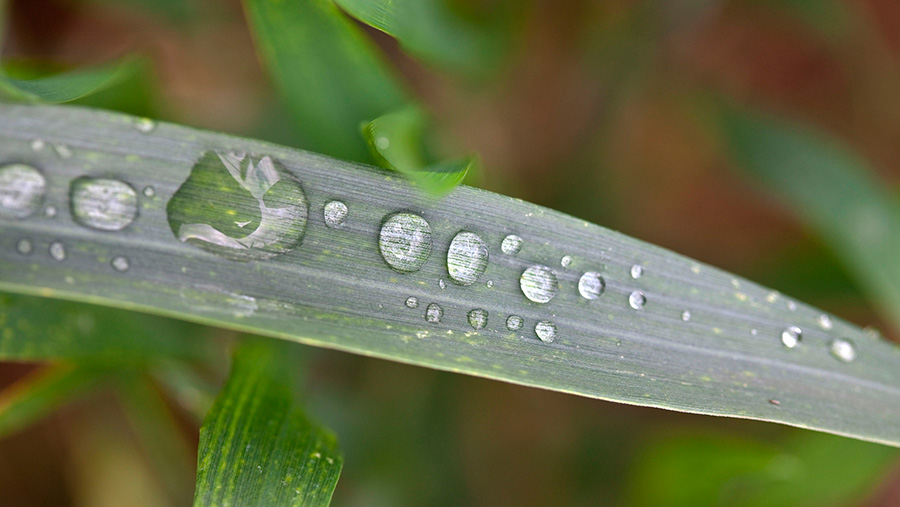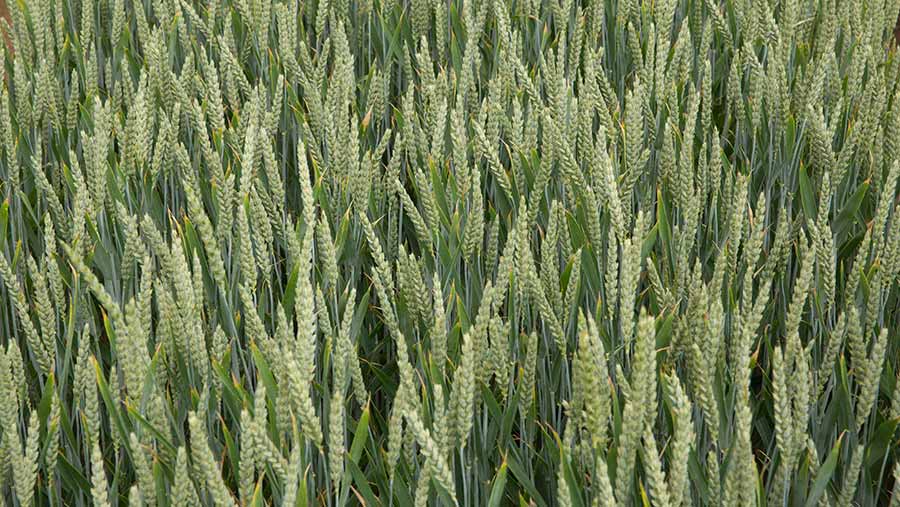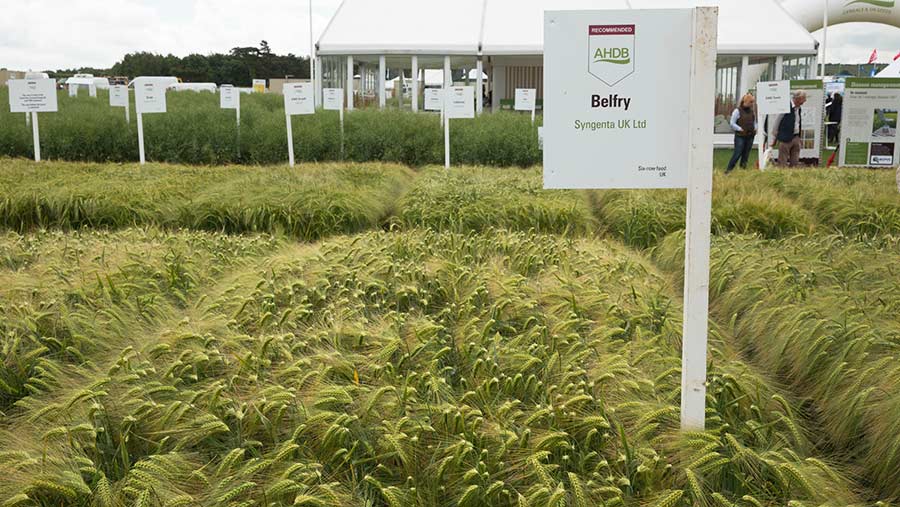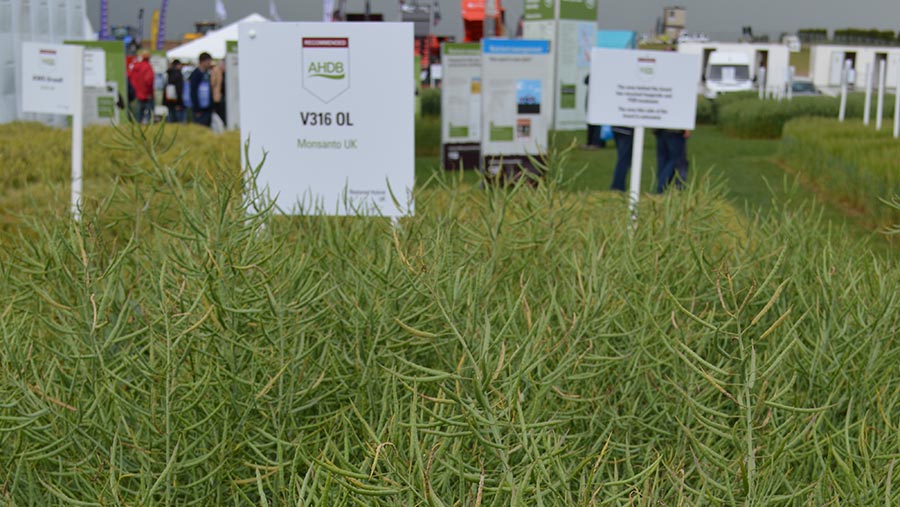Seeds Focus: Varietal disease resistance key in wetter West
 © Tim Scrivener
© Tim Scrivener In the final part of our daily four-part series, we look at which are the top variety choices for cereal and oilseed rape growers in the West for this coming autumn.
Disease resistance is becoming increasingly important for growers choosing cereal and oilseed rape varieties, and tolerance to septoria in wheat is key in the wetter West.
David Leaper, seed technical specialist at advisory group Agrii says although yellow rust has become more prominent, septoria is the key driver for wheat variety choice and it is most challenging to control.
Over the past two years the number one performing variety in the West has been Graham, which is in its first year on the AHDB Recommended List.
“It has good grain quality, fantastic septoria resistance and good yellow and brown rust scores. It is stiff and responds well to plant growth regulators,” says Mr Leaper.
Seeds Focus
- Introduction: Weed and pest worries dominate winter cropping choices
- Part one: What growers need to assess before drilling in the east
- Part two: New quality wheats benefit southern growers
- Part three: North – feed wheats are favourite choice
Feed variety Graham yields 107% in the West region.
It sits in the main drilling window, is slow developing in the autumn, with relatively early maturity although it does not have orange blossom midge resistance.
Another wheat variety to consider is Siskin, which has proven the most consistent variety across all regions of the UK, says Mr Leaper.
It is a Group 2 milling wheat but it could be grown as a high yielding feed wheat as it has a really consistent performance and is fast developing.
It can be drilled late, has good disease resistance and grain quality and is stiff, he adds.
Although Siskin is in danger of being overlooked because it is a Group 2 variety, growers in the West are already growing breadmaking varieties such as Skyfall and Crusoe for feed due to their performance.
Matt Olifent, agronomist at Pearce Seeds, says both Siskin and Crispin are good varieties, particularly as some of the market leading varieties have succumbed to yellow rust this year.
Crispin yields 105%, scores 9 for both yellow rust and mildew and 6 for septoria, as well as having orange blossom midge resistance.

Graham feed variety has good septoria resistance
Late drilling
“It works well in later drilling spots, which can help in areas like Dorset where there is a lot of maize in rotations,” he adds.
Diego has featured quite heavily in the West but it might soon be replaced with Costello due to a slip in its disease resistance, says Mr Leaper.
Costello yields 104% in the West, has a score of 8 for mildew, 9 for yellow rust, 6 for brown rust and 6 for septoria.
If growers are happy with a variety and it has performed well on farm it makes forecasting yields and management much easier, says Sean Burns, field trials senior manager at AHDB Cereals and Oilseeds.
Two wheat varieties, which are not on the Recommended List, have done well in the West including Solace and Anapolis which have shown good resistance against disease.
Milling wheats
Growers looking at Group 1 milling wheats are likely to be growing Skyfall and Crusoe but the newcomer Illustrious gives a broad disease spectrum and there is market interest, says Mr Leaper.
“In the Dorset area and further north, there is a strong biscuit market, particularly for export, but I am struggling to see anything outperforming Zulu and Revelation,” he adds.
Newcomers Barrel and Basset have septoria resistance scores no better than Zulu and Revelation, so Mr Leaper cannot see a market shift towards them unless the millers get behind them.
Winter barley
In the barley sector, growers aiming to put winter malting varieties in the ground are likely to stick with Venture and Talisman.

Belfry winter barley
Glacier and Tower are likely to dominate the feed market, with no big changes to the pecking order of varieties, as growers stick to established varieties.
California offers good straw and grain quality, but there has not been a great deal of interest in varieties such as Orwell as the new varieties are just not offering any change in yield or quality.
There has been some interest in hybrids, with Bazooka and Belfry likely to be sell-outs nationally.
Those who invest in hybrids are likely to see higher yields and improved grain quality, but they might be more suited to more eastern growers, says Mr Leaper.
Oilseed rape
The area down to oilseed rape is could edge up slightly across the West, as there are not the same pressures from flea beetle as in the East, experts say.
Growers should be mindful of light leaf spot which is driving variety decisions and newcomer Elgar is likely to be the most significant variety, with its early maturity, stiff straw and high oil content.
“It has a good growth habit, establishing well and is vigorous in the autumn, as well as having good disease resistance,” says Mr Leaper
Autumn vigour should also be considered, according to Gavin Burrough, agronomist at Pearce Seeds, and Campus has performed well in Pearce Seeds’ trials for several years, doing well for vigour and yield.
“It was one of the most widely sown varieties last year, has tolerance to verticillium wilt and is consistent and reliable,” he says.
Good feedback
Nikita has received good feedback and has very good light leaf spot resistance, slightly better than Elgar.

V316 OL oilseed rape
It is not on the Recommended List in the East/West because of its poor phoma score but still performs well, and grows better than Elgar in the autumn.
“Switching could be advantageous if the weather turns bad,” says Mr Leaper.
Amalie is a good option for those wishing to make the most of its turnip yellows virus resistance, while Advance is of interest to those seeking early maturity and high oil contents
Mr Burrough suggests Harnas is a good choice of hybrid as it is early to establish, has good vigour and very good standing, but Exalte is the hybrid of choice for Mr Leaper.
“It is a vigorous type that sits in the main to later drilling window and has the best combined disease resistance. Alizze has also done well in Agrii’s trials, producing high oil content, good disease resistance and stiff straw,” says Mr Leaper.
There has also been a lot of interest in Clearfield varieties, with many growers struggling to control weeds with conventional herbicides.
For those looking at high-oleic, low-linolenic varieties, Mr Leaper recommends V316 OL as it is the highest yielding variety and has received very positive feedback.

